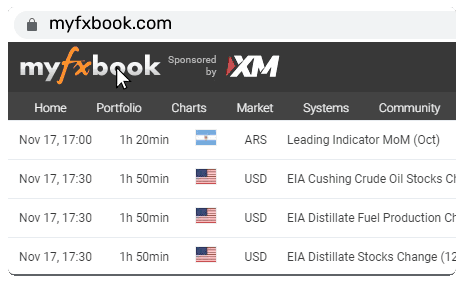What is the PMI and How to Trade it?

Understanding PMI: A Key Indicator for Trading the U.S. Economy
In this informative video, Luca Santos, Technical Market Analyst from ACY Securities, delves into the significance of the Purchasing Managers' Index (PMI) as a crucial economic tool and how to effectively trade it. As one of the most reliable leading indicators of the U.S. economy, the PMI provides valuable insights into the manufacturing and services sectors. With the United Kingdom S&P Global/CIPS Manufacturing PMI as well as United States S&P Global Manufacturing PMI Final being released tonight makes this video a valuable tool for your trading.
Luca explains that the PMI is a monthly survey-based indicator compiled and released by the Institute for Supply Management (ISM). The survey is sent to senior executives across more than 400 companies in 19 primary industries, carefully weighted by their contribution to the U.S. gross domestic product (GDP).
During the survey, the executives are asked about business conditions and any changes, including improvements, deterioration, or no changes. The PMI is based on five major survey areas, each holding equal weightage:
1. New Orders: This component reflects the number of orders placed for goods and services, providing insights into future demand.
2. Inventory Levels: The inventory levels survey area assesses the current stock of finished goods, raw materials, and supplies. Fluctuations in inventory levels can indicate shifts in production and demand.
3. Production: This component measures the level of output from manufacturing and service industries. It provides an overview of the overall productivity and capacity utilization.
4. Supplier Deliveries: The survey area of supplier deliveries gauges the speed at which raw materials are delivered to companies. Delays in deliveries may indicate supply chain disruptions or increased demand.
5. Employment: The employment component focuses on workforce conditions. It highlights changes in hiring or layoffs and reflects the overall labor market trends.
Luca Santos shares practical strategies on how traders can leverage the PMI to make informed decisions in the financial markets with examples for the GBPJPY and the GBPUSD. By understanding the implications of PMI data releases and monitoring the trends, traders can identify potential trading opportunities and manage risk effectively.
Join Luca Santos in this engaging video to gain a comprehensive understanding of the PMI and its significance in trading the U.S. economy. Stay ahead of the markets by incorporating this key economic tool into your trading strategy.
This content may have been written by a third party. ACY makes no representation or warranty and assumes no liability as to the accuracy or completeness of the information provided, nor any loss arising from any investment based on a recommendation, forecast or other information supplied by any third-party. This content is information only, and does not constitute financial, investment or other advice on which you can rely.



















